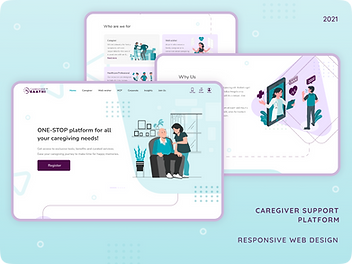

CoDot is a new and innovative Indian branching narrative story platform that allows people to connect based on their interactions within the story.
It offers an engaging and personalized storytelling experience where users can choose their own path and make decisions that shape the outcome of the story. The platform aims to bring together people from different backgrounds and cultures to experience and create unique and diverse stories together.
Problem Statement
The CoDot platform is a new and innovative concept in the storytelling domain, and the challenge was to create a user interface that could provide a seamless and enjoyable experience for users. The user interface needed to be simple and intuitive, allowing users to easily navigate through the platform and make decisions that shape the story's outcome.
In the pursuit of creating a user-centric and impactful solution, a comprehensive user research methodology was employed. The process began with a thorough competitive analysis to understand the landscape, followed by a creative brainstorming session using mind mapping techniques. This laid the foundation for identifying potential pain points and opportunities within the market.
The journey began by analyzing key players and competitors in the domain. This involved a deep dive into their offerings, user experience, and strengths and weaknesses. This analysis helped in understanding existing user expectations and industry standards, laying a crucial groundwork for the subsequent stages of research.
When it comes to the market for online storytelling platforms, CoDot has some stiff competition to contend with. Let's take a look at some of CoDot's major competitors and how they stack up against CoDot.




Following the competitive analysis, the focus shifted to identifying the target users. This involved a meticulous examination of demographic, psychographic, and behavioral aspects. The goal was to create detailed user personas that would guide the development process in aligning with user needs and expectations.






Through a synthesis of data gathered from competitive analysis and user interviews, common pain points were identified. This step was crucial in understanding the challenges faced by users in the current landscape, forming a basis for problem-solving in the subsequent ideation phase. The research revealed the following insights:

Most of the apps are overwhelming and difficult to navigate, with too many options and features that makes it hard to find what I am looking for.

It is challenging to discover new and relevant audiobooks and other spoken word content.

I feel that the platform's recommendation and discovery features were not personalized or effective.

It is difficult to connect with like-minded individuals for story discussions.
In the Ideation phase, we harnessed the insights gathered from user research to fuel a creative and collaborative exploration of potential solutions. This phase aimed at generating innovative ideas and conceptualizing designs that directly addressed the identified user pain points.
The common pain points became the focal point for ideation, where the team formulated "How Might We" questions to reframe problems as opportunities. This step aimed at unlocking creative solutions and guiding the development process towards addressing real user needs.

After a comprehensive exploration of user needs and challenges through the How Might We? process, the next crucial step in the development journey was to prioritize features which was time effective. To achieve this, we employed the Moscow Method, a systematic approach that categorizes features into four priority levels: Must-haves, Should-haves, Could-haves, and Won't-haves.

In the Conceptualization phase, the insights gathered from user research fuel the creative process, leading to the development of user flows, wireframes, and prototypes. This phase is characterized by translating abstract ideas into tangible design elements, setting the stage for a visually coherent and user-friendly product.
In response to the user goal of navigating through stories and connecting with users who experienced the same story through different paths, I utilized FigJam to craft a user flow that meticulously outlines the journey. This visualization serves as a guide to ensure the application aligns with the user's goals of seamless story exploration and meaningful connections.

This user flow acted as a blueprint, aligning the application's design with the user's overarching goal of story exploration and community connection. By understanding the diverse paths users may take within the stories, the application is better equipped to foster connections among those who share similar narrative experiences.
The colors I selected for CoDot are bold and vibrant to add visual interest and they create a sense of energy and excitement. The sans-serif font used here is "Quicksand' which is easy to read and conveys a modern and approachable aesthetic.



Based on the research insights, I came up with the following solutions to enhance the user experience on CoDot:



During the project's development, we encountered several challenges, with the most significant being the constraint in designing offline functionality due to limitations in both time and budget. Regrettably, this resulted in users being unable to access specific features or stories without an internet connection, creating a substantial restriction on the platform's accessibility. Additionally, the project confronted difficulties in conducting comprehensive user research due to the imposed time constraints. The limited timeframe impeded our ability to conduct thorough surveys or usability testing with a diverse user group, impacting the depth of insights gained from diverse user perspectives.
In overcoming these challenges, the iterative design process emerged as a crucial element. Instead of adhering to a linear and rigid development path, the iterative approach allowed for continuous refinement and enhancement based on ongoing feedback and insights.





